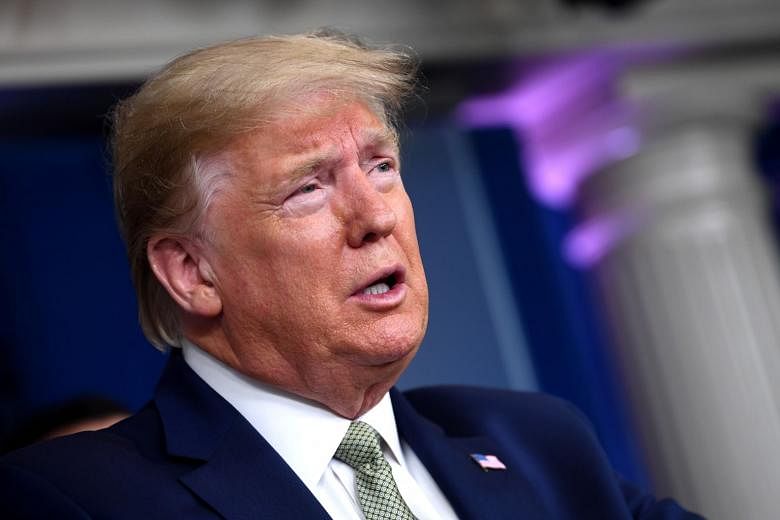NEW YORK (BLOOMBERG) - US President Donald Trump's plan to send US$1,000 to every American, part of a US$1 trillion (S$1.43 trillion) emergency stimulus package (S$1.43 trillion) to contain the economic hit from the coronavirus, is unlikely to stop a US recession.
The administration announced plans on Tuesday to send the direct payments in coming days following several weeks of pressure from investors, economists, left-leaning think tanks and Republicans such as Utah Senator Mitt Romney.
The stimulus will help replenish bank accounts amid widespread firings, closures and foregone pay, and may help with the eventual economic recovery. But several analysts say even with such sweeping measures the world's largest economy won't be able to avoid a contraction.
"It's going to be hard for us to find a package that will be able to avert a recession at this point given the size of the shock that the US economy is facing," said Matthew Luzzetti, chief US economist at Deutsche Bank.
At least half a dozen firms forecast a recession, including Pantheon Macroeconomics and Oxford Economics analysts who now see contractions of around 10 per cent in the second quarter that would be among the steepest on record. Some economists say that the recession has already begun as retail sales slid in February and businesses have begun cutting staff.
Treasury Secretary Steven Mnuchin raised the possibility with Republican senators that US unemployment could rise to 20 per cent without government intervention because of the impact of the coronavirus, according to people familiar with the matter, Bloomberg News reported Tuesday.
The fiscal stimulus is a good start but must be made bigger, according to Josh Bivens, director of research at the Economic Policy Institute, which focuses on low- and middle-income Americans. "I don't think US$1,000 is enough," he said. "We'll likely need this one or two more times throughout the recession."
Contractions in gross domestic product and payrolls are unavoidable, Bivens said, because of the need to control the epidemic's spread using social distancing and temporarily closing down gathering places such as restaurants and retail stores. Additionally, just because Americans receive a check in the mail doesn't mean they'll spend it immediately.
Consumer spending accounts for about 70 per cent of the economy. There have already been labour market impacts, with reports of mass layoffs in the service sector in major cities, including Washington. Bivens estimates job cuts will reach about 3 million by summer.
Greg Brown, finance professor at the University of North Carolina's Kenan-Flagler Business School and a former Federal Reserve Board researcher, said the payments would offer millions of Americans much-needed spending money. He estimates the jobless rate will rise as high as 9 per cent in two months from a half-century low of 3.5 per cent in February.
Direct payments are easier on the budget - something that deficit hawks could support - and one of the most effective approaches to quickly bolster spending now. Bivens estimates that providing US$1,000 for adults and US$500 per child would cost about US$300 billion.
Lump-sum payments to households also deliver a more immediate boost to demand and would reach more low- and middle-income Americans who spend more of their disposable incomes than affluent consumers, some analysts have said this week.
But Trump's announcement of the plan is just the first step. The funds still must win approval in Congress and be sent immediately to those most in need.
Whatever the final cost of fiscal stimulus may be, "it is appropriate, particularly at a time where borrowing costs are near record low levels for the US government," Luzzetti said.











